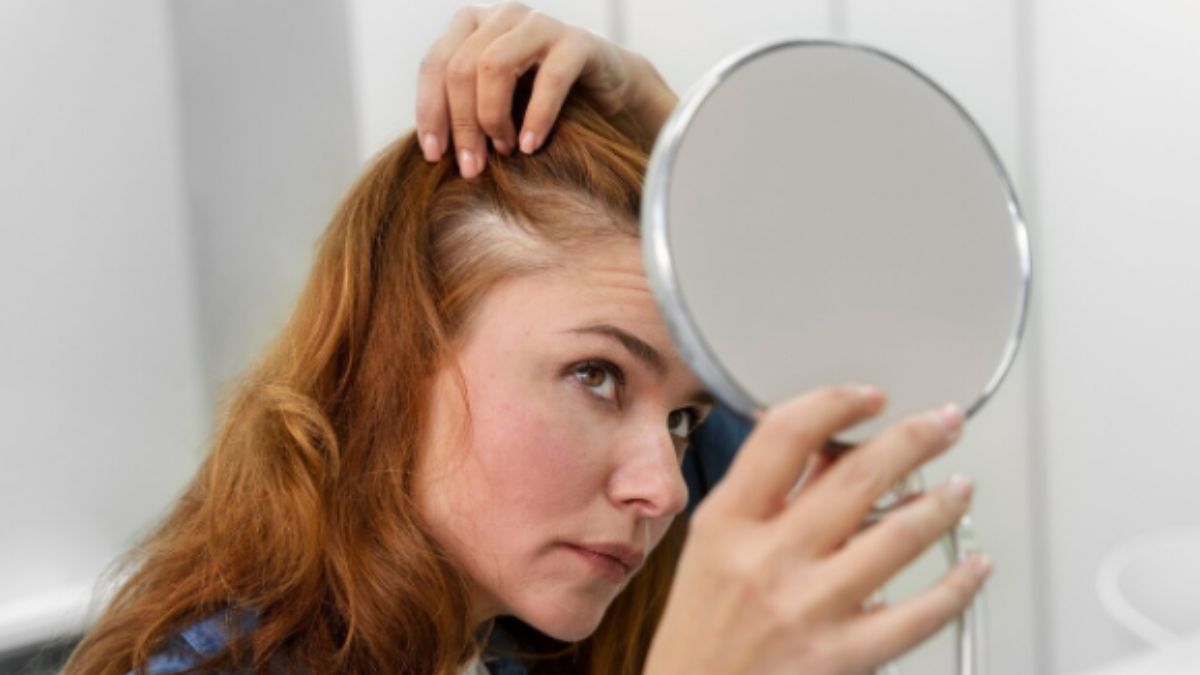Hair loss hits millions worldwide, changing not just how we look but how we feel. It doesn’t really care about your age or gender, though it tends to show up more as you get older.
Understanding why hair falls out is the first step to doing something about it. Genetics, hormones, stress, and even some health conditions can all play a part. There’s no shortage of options out there—medications, lifestyle tweaks, and all sorts of treatments. Let’s dig into these and see what might actually fit your situation best.
Causes and Risk Factors of Hair Loss
Hair loss can come from all sorts of places—your DNA, your habits, even your environment. Figuring out what’s behind it really helps when you’re looking for solutions.
Genetic Predisposition and Hereditary Patterns
If you’ve got a family history of hair loss, there’s a good chance you’ll see it too—especially with androgenetic alopecia (pattern baldness). This hits about half of all men by age 50 and plenty of women after menopause.
Dihydrotestosterone (DHT) is the main culprit here. When your scalp sensitive to DHT, hair follicles shrink and the growth phase gets shorter. That’s when you start to notice hair thinning or bald spots.
Family patterns offer some clues:
- Male pattern baldness: Usually starts with a receding hairline or thinning at the crown
- Female pattern hair loss: Thinning spreads across the scalp, especially where you part your hair
If both your parents lost their hair, your odds go up. But sometimes genetics skips around, so it’s not always easy to predict.
Hormonal Imbalances
Hormones can really mess with your hair. When things get out of balance, hair loss often follows.
- Testosterone and DHT act differently in men and women. Too much DHT, especially if you’re genetically prone, speeds up hair thinning.
- Thyroid issues—whether your thyroid’s too slow or too fast—can throw off your hair’s growth cycle and cause it to thin out.
Women deal with their own set of hormonal triggers:
- Pregnancy and childbirth: After giving birth, dropping estrogen levels can cause a lot of shedding
- Menopause: Lower estrogen and relatively higher androgens
- Polycystic ovary syndrome (PCOS): Extra androgens can lead to male-pattern hair loss
Hormonal tests can help figure out what’s going on. Treating the root hormonal issue usually works better than just chasing the hair loss itself.
Medical Conditions and Treatments
Some illnesses and treatments can make your hair fall out, too.
Autoimmune diseases like alopecia areata make your immune system attack your hair follicles, so you get patchy loss. Lupus and dermatomyositis can cause problems for your hair as well.
Lacking certain nutrients can show up on your scalp. Watch out for:
- Iron
- Vitamin D
- Not enough protein
- Zinc
Scalp infections like ringworm can leave you with bald patches if you don’t treat them.
Plenty of medications list hair loss as a side effect:
- Chemotherapy
- Blood thinners
- Antidepressants
- Blood pressure meds
- Certain arthritis drugs
Stressful events can also trigger hair loss. Telogen effluvium happens when stress pushes a bunch of follicles into the resting stage, leading to noticeable shedding a couple months later.
Lifestyle and Environmental Influences
Your daily habits and surroundings can make a big difference, too.
- Hairstyles matter. Tight ponytails, braids, or buns can pull on your hair and cause traction alopecia. Too much heat styling, harsh chemicals, or aggressive brushing weakens hair, making it more likely to snap or fall out.
- What you eat affects your hair. Crash diets or cutting out too many calories or protein can set off shedding after a few months.
- Stress isn’t just in your head—it can mess with your hair, too. High cortisol disrupts hair growth cycles, pushing more follicles into the resting stage.
Don’t forget about the environment:
- UV rays
- Air pollution
- Chlorine and saltwater
- Tobacco smoke
Sleep counts for a lot. Not getting enough rest can slow down cell repair, including in your hair follicles, and over time, that might mean more thinning.
Got a wide range of hair loss treatment in Singapore, mixing both Eastern and Western methods. You’ll find FDA-approved meds like finasteride and minoxidil at dermatology clinics and hospitals all over the island.
Some advanced treatments are becoming more popular, like:
- Platelet-rich plasma (PRP) therapy
- Low-level laser therapy (LLLT)
- FUE hair transplants
Many clinics also offer Traditional Chinese Medicine—herbal remedies, acupuncture, that sort of thing—as a complement to Western treatments. Specialists often create custom treatment plans that mix and match different approaches, depending on what’s causing your hair loss and how it shows up.
Singapore’s sticky, humid weather brings its own hair challenges. Local experts usually give climate-specific advice on hair care routines and which products to use to avoid extra damage.
Comprehensive Strategies for Managing Hair Loss
Managing hair loss isn’t just about one thing—it’s a mix of medical treatments, nutrition, hair care, and sometimes more specialized procedures. Depending on what’s behind your hair loss, some approaches work better than others.
Medical and Pharmaceutical Treatments
Minoxidil (Rogaine) is an easy-to-find topical treatment. It helps by making the hair growth phase last longer and making follicles bigger. You’ll usually notice results after three to six months if you stick with it. Doctors sometimes prescribe finasteride (Propecia) to block DHT, the hormone behind male pattern baldness. About two-thirds of men see regrowth with finasteride, but women should steer clear due to the risk of birth defects. For women dealing with hormone-related hair loss, anti-androgens like spironolactone can help by blocking testosterone and DHT. Corticosteroids reduce inflammation in certain types of hair loss. You might get them as injections, creams, or pills, depending on how bad things are.
Dietary and Nutritional Considerations
Protein is huge for hair growth—hair’s made mostly of keratin, which is a protein. Most adults need about 0.8 grams of protein per kilo of body weight each day, from foods like eggs, fish, or beans.
Some nutrients really matter for healthy hair:
| Nutrient | Food Sources | Benefits for Hair |
| Iron | Red meat, spinach, lentils | Gets oxygen to your hair follicles |
| Zinc | Oysters, beef, pumpkin seeds | Helps with hair tissue growth and repair |
| Biotin | Eggs, nuts, sweet potatoes | Supports keratin production |
| Omega-3s | Fatty fish, walnuts, flaxseeds | Calms inflammation around follicles |
Don’t forget water—staying hydrated helps nutrients reach your hair. Try for at least 8-10 glasses a day. Crash diets often lead to temporary shedding because your body isn’t getting enough nutrients. Losing weight slowly helps avoid this problem.
Hair Care Practices and Prevention
Be gentle with your hair to keep it from breaking or getting pulled out. Use a wide-tooth comb on wet hair and skip tight hairstyles that tug at your scalp. Heat styling—blow dryers, straighteners, curling irons—can break down hair. Use these tools less often, and when you do, use a heat protectant.
Pick sulfate-free shampoos to keep your natural oils intact. How often you wash depends on your scalp: oily scalps may need daily washing, while dry ones do better with just 2-3 times a week. Scalp massage is underrated. Five minutes a day, gentle circles with your fingertips, gets blood moving and can help your hair. Protect your hair from the sun with hats or products that have UV filters. Too much sun weakens hair proteins and fades color—nobody wants that.
Hair Restoration Procedures and Alternatives
Hair transplantation comes a long way, especially with Follicular Unit Extraction (FUE). Surgeons now take individual follicles from areas with thicker hair and move them to spots that need it more. Most folks need about a week or two to heal, and you’ll probably start seeing real changes somewhere between six months and a year. Platelet-Rich Plasma (PRP) therapy is another option. Here, doctors draw your blood, concentrate the platelets, and inject them into your scalp. These platelets carry growth factors that might wake up sleepy follicles. Usually, people go through three or four sessions, each spaced about a month apart.
Low-level laser therapy is also out there, using red light to boost cell activity. You’ll find FDA-approved gadgets like combs, helmets, and caps you can use at home. The catch? You have to stick with it—most people use them two or three times a week. Wigs and hairpieces have gotten surprisingly good. You can choose human hair options and attachments that actually stay put, even if you’re pretty active. Some semi-permanent systems last for weeks without needing to come off.\











